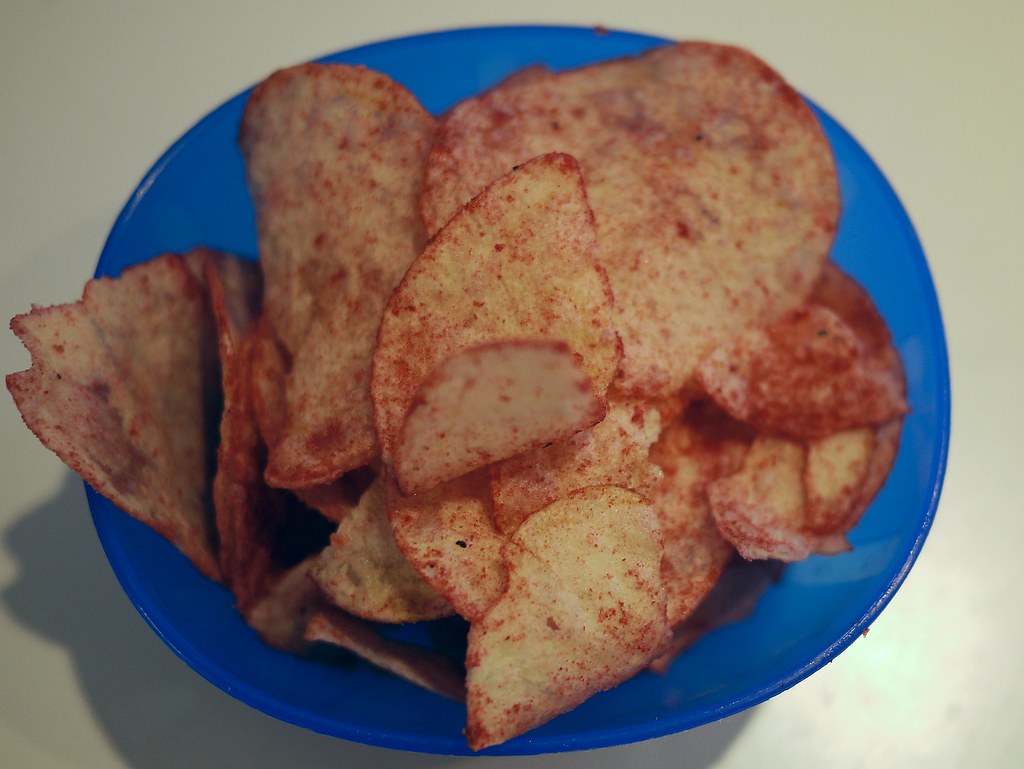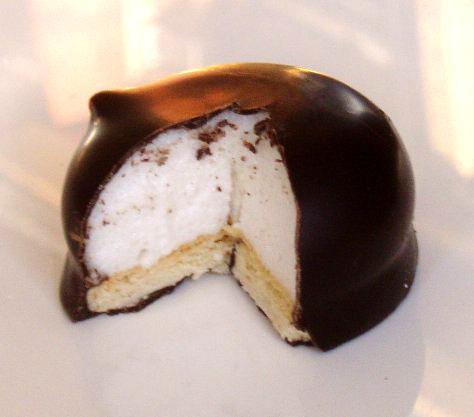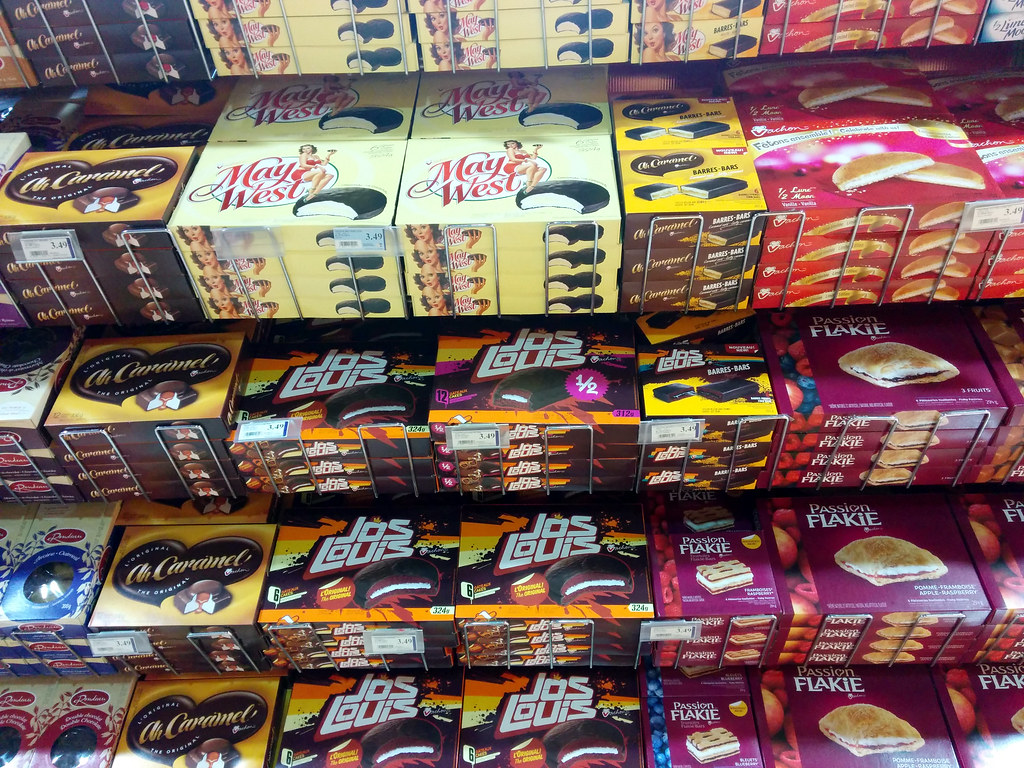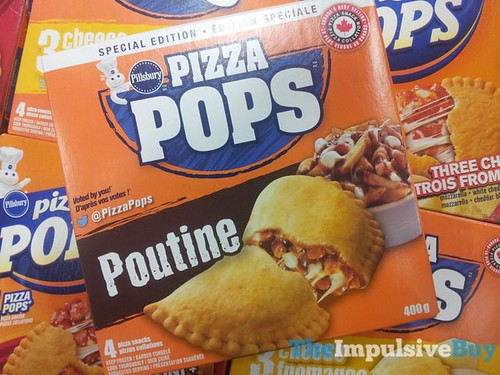Canadians and Canadian companies have developed and marketed unique snacks and flavours to consumers. Some of these sweet and savoury treats have come to define a “Canadian” palette or cuisine. This listicle describes some of these popular food items and how these foods came to appear on grocery store shelves.
Ketchup Chips

Though it is not clear who first invented ketchup-flavoured chips, some sources indicate that consumers were adding a ketchup seasoning blend to unflavored potato chips in the early 1970s. This may have inspired Hostess Potato Chips, the leading Canadian potato chip manufacturer of that era, which was experimenting with new flavours. Among several fruit-flavour ideas, which were unsuccessful, Hostess considered simulating the flavour of French fries with ketchup. Ketchup chips were primarily sold by Hostess in Canada in the 1970s and 1980s before the company was acquired by Frito-Lay. While ketchup chips do not quite taste like ketchup, they have a sweet and tangy flavour profile with a strong foundation in vinegar, which appeals to the taste buds of some Canadian consumers. Despite the prominence of ketchup in American cuisine and fast-food, ketchup chips are not widely available in the United States, though they are very popular in Canada.
Whippets

The Whippet is a type of chocolate-coated marshmallow cookie that was first manufactured in Montreal in 1901. Originally called the Empire, it was first test-marketed at a hockey game and was first sold as a high-end luxury item, something that helped the Viau Biscuit Company to expand its market. The cookie was created by Théophile Viau, son of Charles-Théodore Viau, for whom the Viau company was named. The original Empire cookie was reformulated and rebranded as the Whippet in 1927, though this product name is best-known in Quebec. Outside of Quebec, the similar Viva Puff is sold. Viau was sold to Dare Foods in 2004, which continues to manufacture the Whippet.
The Whippet is very similar to the Mallomar, which was developed in New Jersey by Nabisco in the 1910s. The cookie has since become closely associated with the cuisine of the New York City metropolitan area. Nearly all Mallomars are sold in this region, yet they are manufactured entirely in Scarborough, Ontario, and are not available to Canadian consumers. Despite the similarity between the Whippet and the Mallomar there is no relationship between them. They were invented years apart in two different places and have never competed for the same consumers.
Cheezies
Cheezies
Bags of Cheezies at a grocery store in Sidney, British Columbia, 26 February 2025.
(photo by James MacDonald/Bloomberg via Getty Images)
The Cheezie is a distinctly Canadian snack that has not changed since it was invented in 1949. It is orange-coloured, has a noticeable salty-cheesy flavour (made from aged Canadian cheddar) and comes in irregular shapes, a consequence of the cornmeal pellet machine that produces them.
Cheezies are manufactured by the company W.T. Hawkins in Belleville, Ontario. W.T. Hawkins Inc., originally known as Confections Limited, was founded in Chicago in the early 1900s and at one point was the largest producer of chips, candy and popcorn in the United States. After an acrimonious divorce, the company’s founder Willard Trice Hawkins’ only remaining asset was the Cheezie factory, then located in Tweed, Ontario. After a fire destroyed that factory in 1956, the company moved to Belleville, where Cheezies have been made ever since. The company is still owned by Willard Trice Hawkins’ descendants and does not advertise. In 2014, the Globe and Mail reported that 24 million bags of Cheezies were sold in Canada each year. In 2024, Hawkins celebrated the 75th anniversary of the Cheezie. Approximately 400 people gathered on the site of a new proposed Cheezies plant in Belleville.
Jos Louis

The Jos Louis snack cake is a round red-velvet cake with a vanilla creme filling covered in a thin layer of milk chocolate. The cake is closely tied to the story of Rose-Anna Vachon (née Giroux), a farmer’s wife who had developed her baking skills while raising her children. At the age of 45, she and her husband (Joseph-Arcade) acquired the LeBlond Bakery in Sainte-Marie-de-Beauce, Quebec, and began selling a wide variety of baked goods. The bakery business grew with Vachon products being sold throughout Quebec. Eventually all of the Vachon children became involved in the family business. In 1932, the business perfected the Jos Louis, which was named for the couple’s sons Joseph and Louis and not for the famed American boxer Joe Louis. Some believe the Jos Louis is a Canadian “response” to the popular American Ding Dong, a similar snack cake. In fact, the Jos Louis predates the Ding Dong by roughly 30 years.
In 1999, Interstate Bakeries, the American company that manufactured Twinkies and Wonder Bread, made a bid to acquire Vachon, but Quebec-based cheese manufacturer Saputo Inc. stepped in and acquired Vachon for $283 million. In 2014, Mexican conglomerate Grupo Bimbo’s Canada Bread Company acquired Vachon from Saputo for $120 million. They continue to operate a plant in Sainte-Marie-de-Beauce.
Pizza Pops

The Pizza Pop is very similar to a calzone, an oven-baked savoury pastry that is often filled with meat, cheese and tomato sauce. Pizza Pops are precooked and often warmed in a microwave oven. They were invented by Winnipeg entrepreneur and restauranteur Paul Faraci at one of his restaurants in 1964. The story goes that Faraci had not enjoyed a panzerotti (similar to a calzone) he had ordered at a Winnipeg restaurant and decided to make his own. The Pizza Pop was designed to provide a quick pizza snack that was handheld and more easily transportable than a whole or sliced pizza. As Pizza Pops became more popular, particularly as an easy afternoon snack for kids returning from school, Faraci closed his restaurants to focus on Pizza Pops full time. By the 1980s, a business partner bought Faraci out of the business, but the family kept the original recipe. Pizza Pops were sold to Pillsbury in 1987 and are presently manufactured by General Mills, though they continue to be produced in Winnipeg. Faraci’s dying wish was that his original recipe for Pizza Pops would one day be resurrected, something his great nephew did in 2018. Paul’s Original Pizza Snack can still be purchased in Winnipeg.

 Share on Facebook
Share on Facebook Share on X
Share on X Share by Email
Share by Email Share on Google Classroom
Share on Google Classroom







